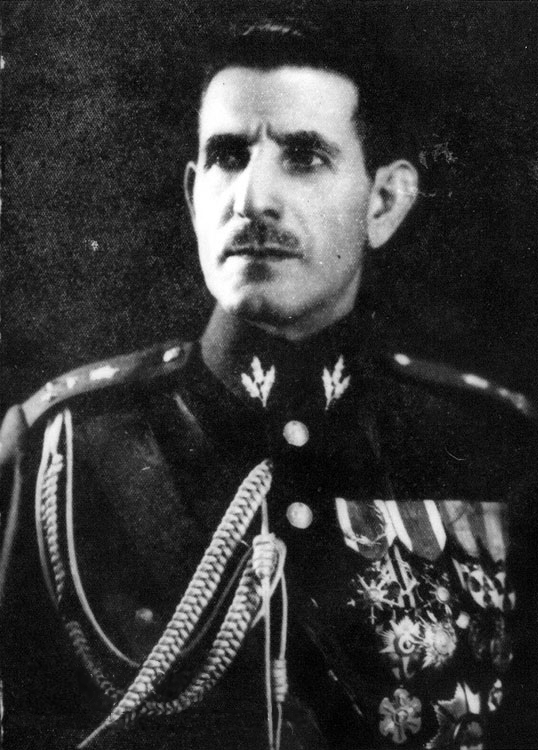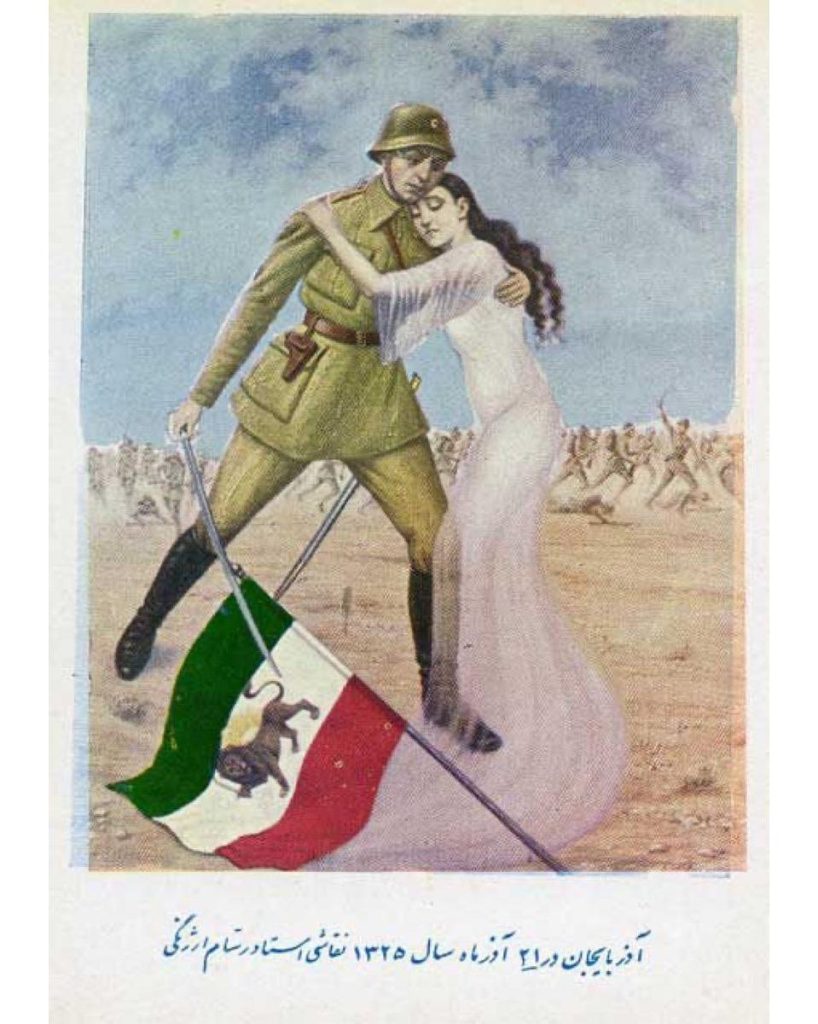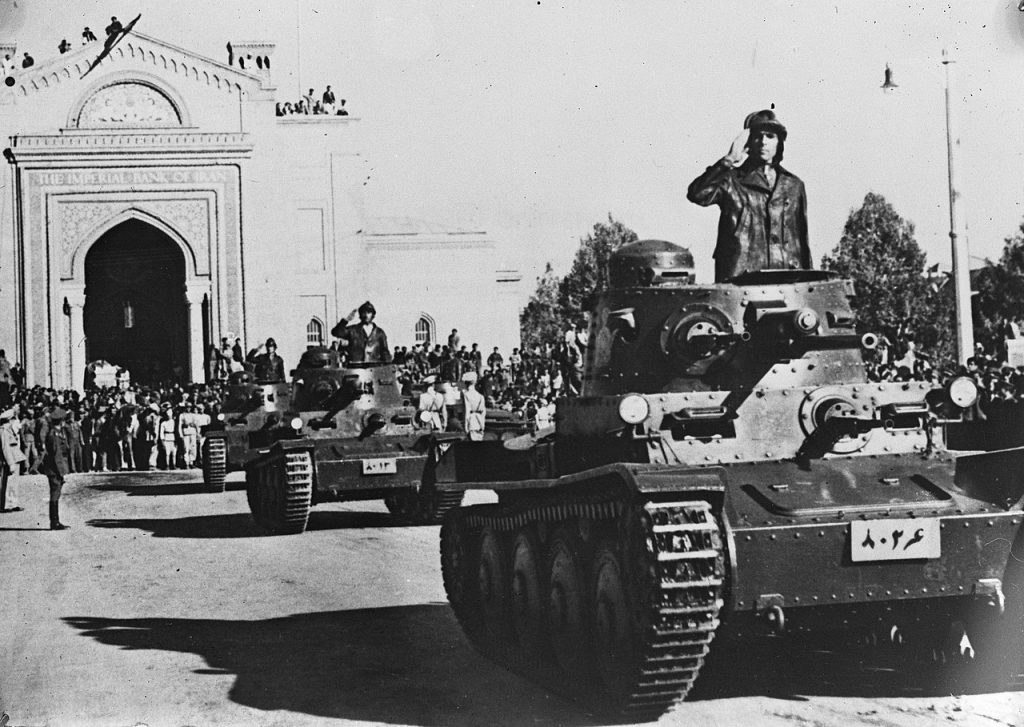
Background and Context
The origins of the crisis can be traced back to August 25, 1941, when Allied forces—comprising the British and Soviet armies—invaded and occupied Iran. This joint operation, necessitated by strategic concerns and the need to secure vital supply routes to the Soviet Union, marked a significant turning point in Iran’s modern history. The occupation was intended to be temporary, with a mutual agreement that Allied troops would withdraw within six months of the war’s conclusion. However, by early 1946, the Soviets, under the leadership of Joseph Stalin, failed to adhere to this agreement. Despite repeated assurances, Soviet forces remained in Iran and expanded their influence by supporting separatist movements in the region. This included the establishment of the Azerbaijan People’s Government and the Kurdish Republic of Mahabad. The presence of Soviet troops and their support for these separatist entities led to armed confrontations with Iranian forces, resulting in significant casualties and escalating tensions.
International Diplomacy and Agreements
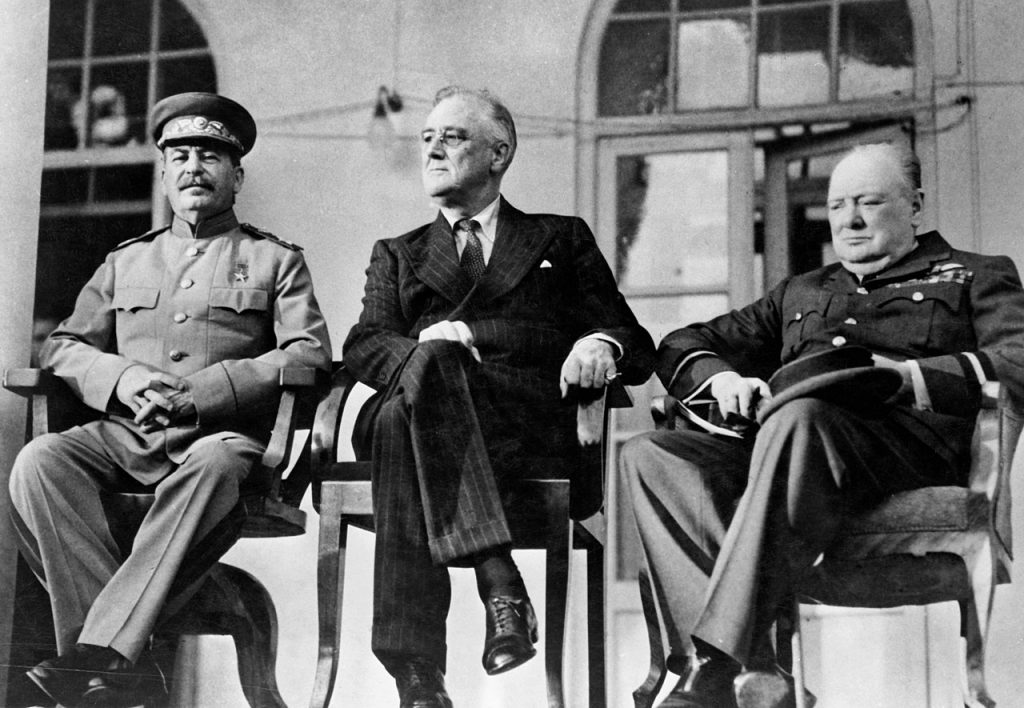
The Tehran Conference of 1943, a pivotal meeting between Allied leaders including U.S. President Franklin D. Roosevelt, British Prime Minister Winston Churchill, and Soviet Premier Joseph Stalin, had established the framework for post-war agreements. The conference underscored the importance of Iranian sovereignty and the commitment to withdraw Allied forces after the war. This agreement was later formalized at the Potsdam Conference.One of the central outcomes of the Tehran Conference was the agreement on the strategic coordination of Allied military operations. The leaders discussed the planning of Operation Overlord, the Allied invasion of Western Europe, which would become a decisive moment in the defeat of Nazi Germany. The conference also underscored the necessity of a united front against the Axis powers and set the tone for future military collaboration. A significant aspect of the Tehran Conference was the discussion of post-war territorial arrangements and the fate of countries liberated from Axis occupation. The conference affirmed the commitment of the Allied powers to respect the sovereignty and territorial integrity of nations affected by the conflict. This included a promise to withdraw Allied troops from occupied territories once the war ended, a pledge that was particularly relevant for Iran, which had been occupied by British and Soviet forces since 1941. The Tehran Conference also laid the groundwork for the establishment of the United Nations, an international organization designed to promote peace and prevent future conflicts. The leaders agreed on the need for a global institution that would facilitate cooperation and dialogue among nations, aiming to provide a framework for international order and collective security.The agreements made at the Tehran Conference were crucial in shaping post-war diplomacy, but their implementation faced challenges. The promise to withdraw Allied forces from Iran was enshrined in the Tripartite Treaty, which declared that the military presence was not an occupation but a temporary measure. The conference’s assurances were intended to ensure Iran’s sovereignty and territorial integrity. Despite these commitments, the post-war period saw tensions between the Allies, particularly over the Soviet Union’s continued presence in Iran. The Tehran Conference’s promises were tested by the Soviet Union’s refusal to withdraw troops and its support for separatist movements in Iran. This discrepancy between assurances and actions contributed to the Iran Crisis of 1946, highlighting the complexities of implementing diplomatic agreements in a rapidly changing geopolitical landscape. The Tehran Conference remains a pivotal moment in history, reflecting both the achievements and challenges of Allied diplomacy during World War II. It set the stage for the post-war order and the Cold War era, influencing international relations and shaping the future of global governance.
The Azerbaijan People’s Government and the Republic of Mahabad: Soviet Support and Their Brief Lives
Azerbaijan People’s Government
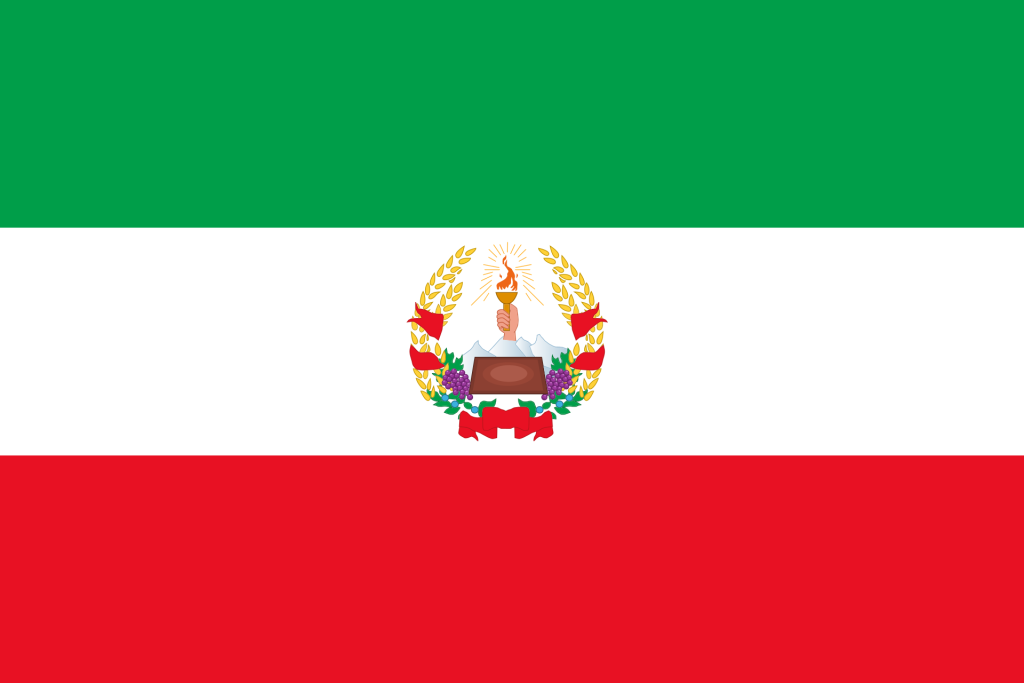
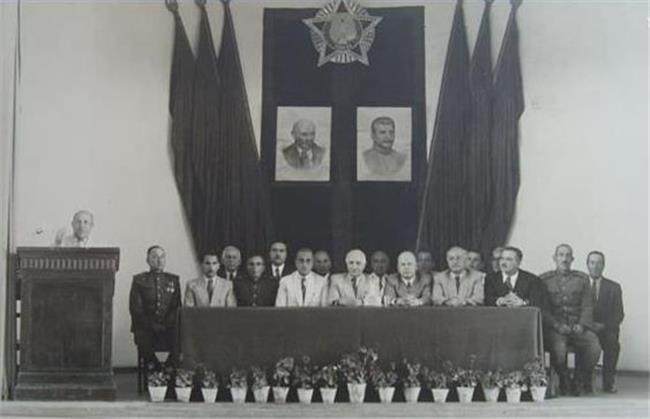
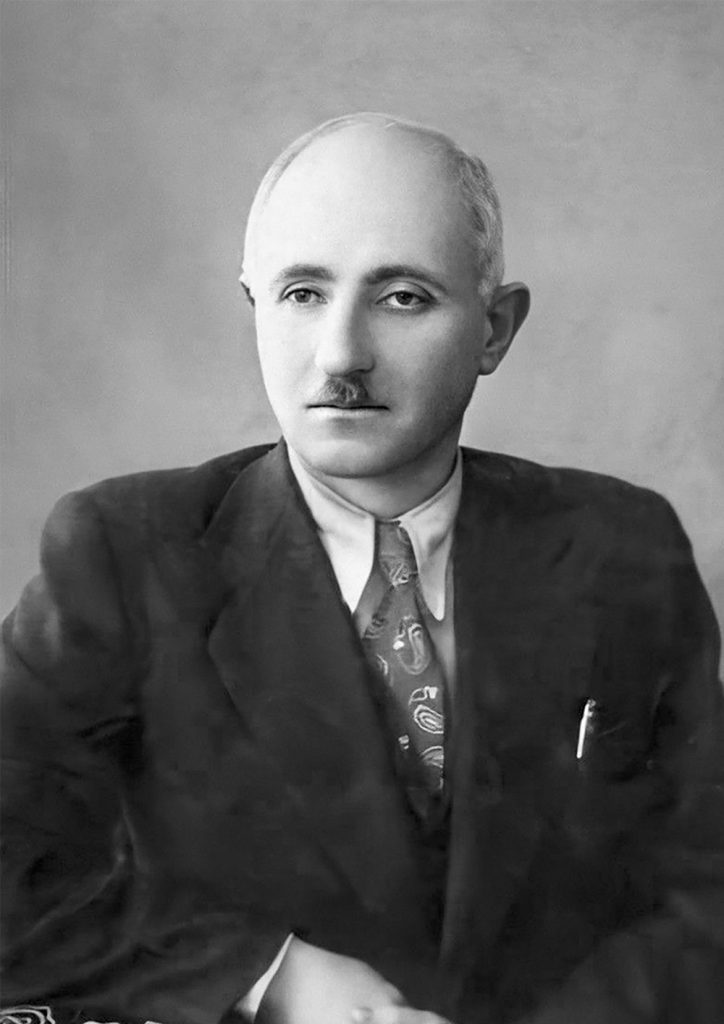
The Azerbaijan People’s Government, also known as the Azerbaijan Democratic Party (ADP), emerged as a significant political entity in Iran during the late stages of World War II. Founded in September 1945, the ADP was led by Jafar Pishevari, a prominent figure in the Azerbaijani nationalist movement. The Soviet Union provided substantial support to the ADP, both militarily and politically, as it sought to establish a pro-Soviet autonomous entity within Iranian Azerbaijan. The Soviet Union’s support for the ADP included military aid, which was critical in consolidating control over Iranian Azerbaijan. Soviet troops were instrumental in preventing the Iranian government from reasserting its authority in the region. The Soviet-backed ADP declared itself in control of Iranian Azerbaijan in early September 1945, promising liberal democratic reforms and swiftly establishing its authority. By mid-November 1945, the ADP had succeeded in capturing all significant government positions in the province, effectively making Iranian Azerbaijan an autonomous republic under the leadership of Pishevari. The Soviet Union’s assistance extended to the formation of a peasant militia and the provision of arms and training. Despite initial successes, the Azerbaijani People’s Government faced internal challenges and external pressure. When the Soviet Union began its withdrawal from Iran in late 1946, the ADP’s position weakened considerably. Iranian troops re-entered the region in December 1946, leading to the collapse of the Azerbaijan People’s Government. Pishevari and his cabinet fled to the Soviet Union, marking the end of the brief but impactful existence of this separatist entity.
Republic of Mahabad

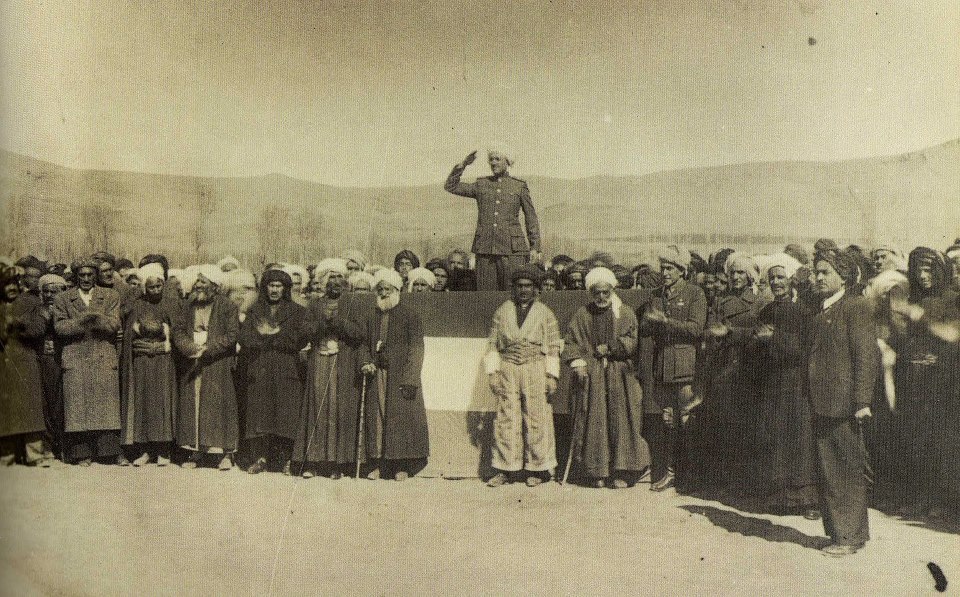
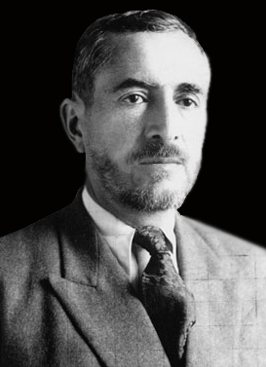
The Republic of Mahabad, established in December 1945, represented a Kurdish nationalist movement backed by the Soviet Union. Led by Qazi Muhammad, the republic enjoyed significant Soviet support, which included military assistance and political endorsement. The Soviets aimed to bolster Kurdish autonomy in northern Iran, as part of their broader strategy to extend influence in the region. The Mahabad Republic’s military forces, known as the Peshmerga, received extensive training and support from Soviet military advisors. Captain Salahuddin Kazimov was instrumental in organizing and advising the Kurdish forces. The Soviets also facilitated the training of Kurdish fighters in Soviet Azerbaijan, enhancing their military capabilities. Despite Soviet backing, the Mahabad Republic faced challenges from both internal dissent and external opposition. The republic achieved notable successes, such as the victory at Qahrawa on April 29, 1946, where the Peshmerga repelled Iranian forces. However, the republic’s fortunes declined with the reduction of Soviet support and the onset of a ceasefire agreement in early May 1946. The final blow to the Mahabad Republic came with a renewed Iranian military offensive in June 1946. The Iranian forces, equipped with artillery and aircraft, successfully recaptured the highlands and reasserted control over the region. The Peshmerga, led by Mustafa Barzani, faced overwhelming odds and eventually withdrew to Iraq, ending the Republic of Mahabad’s brief existence.
Soviet Support and Withdrawal
The Soviet Union’s support for both the Azerbaijan People’s Government and the Republic of Mahabad was a strategic maneuver aimed at expanding Soviet influence in Iran and the broader Middle East. This support included military assistance, training, and political endorsement. However, the Soviet Union’s withdrawal from Iran in late 1946, prompted by international pressure and diplomatic negotiations, led to the dissolution of these separatist entities. The United States and the United Kingdom, along with the Iranian government, exerted significant pressure on the Soviet Union to comply with post-war agreements and withdraw its forces. The eventual Soviet withdrawal marked the end of Soviet-backed separatist movements in Iran, restoring Iranian sovereignty over these territories. The brief existence of the Azerbaijan People’s Government and the Republic of Mahabad serves as a testament to the complex interplay of regional and global politics in the immediate aftermath of World War II.
Negotiations for the Withdrawal of Soviet Forces from Iran


In late 1945, as political turbulence in Iran escalated, Premier Ahmad Qavam embarked on a critical diplomatic mission to Moscow. His objective was to negotiate the withdrawal of Soviet troops from Iran and address the crises in Azerbaijan and Kurdistan. Qavam’s discussions with Soviet leaders, including Joseph Stalin, were pivotal in shaping the course of these negotiations. During their meeting, Stalin assured Qavam that the autonomy of Azerbaijan was not contrary to Iranian sovereignty. However, he insisted that according to Article 6 of the 1921 Treaty, the Soviet Union had the right to maintain its forces in Iran. Stalin referenced Iran’s historical territorial claims against Soviet land post-World War I as a justification for the continued Soviet military presence. Additionally, Stalin highlighted the Soviet Union’s interest in securing oil concessions in northern Iran, which added complexity to the negotiations. In subsequent discussions with Soviet Foreign Minister Vyacheslav Molotov, Qavam sought to address the oil issue. Molotov showed willingness to negotiate, but insisted that any agreement on oil would require parliamentary approval. Qavam pointed out that with the expiration of the 14th Parliament and the scheduling of elections for the 15th Parliament, it was not feasible to discuss and finalize an oil agreement while Azerbaijan remained occupied. Despite Qavam’s proposals for limited autonomy for Azerbaijan within the framework of the Iranian constitution, Molotov upheld Stalin’s position. The talks in Moscow ultimately failed, and Qavam returned to Tehran on March 10, 1946. The 14th Parliament ended shortly after, leading to a prolonged delay in the convening of the 15th Parliament. Despite these setbacks, Qavam succeeded in persuading Soviet leaders to accept the principle that Azerbaijan was an internal issue for Iran. This led to further negotiations in Tehran, where Soviet Ambassador Sadyk Sadykhov continued discussions. In a significant diplomatic development, the United States and the United Kingdom supported Iran’s stance against the Soviet Union, intensifying the pressure on the Soviets. The negotiations culminated in the signing of the Qavam-Sadykhov Agreement on April 4, 1946. This agreement had three main provisions: the complete withdrawal of Soviet troops by the end of May 1946, the establishment of an Iranian-Soviet oil company, and the recognition of the Azerbaijan crisis as an internal matter for Iran. The Qavam-Sadykhov Agreement led to the gradual withdrawal of Soviet forces, concluding by May 19, 1946. A separate seven-point agreement established the Iranian-Soviet oil company, which allocated a 51% share to the Soviets for the first 25 years and a 50% share for the subsequent 25 years, with all assets reverting to Iran upon expiration of the contract. The agreement also stipulated that the oil company contract must be submitted to the newly elected Iranian parliament for approval within seven months. During this period, Iran’s complaint against Soviet actions was discussed at the United Nations Security Council, where U.S. support for Iran was evident. The U.S. pressure, exemplified by President Truman’s ultimatum to Stalin, played a crucial role in the eventual Soviet withdrawal. Despite some historians questioning the authenticity of Truman’s ultimatum, the repeated warnings from the U.S. were significant. The successful resolution of these diplomatic negotiations highlighted the complex interplay of international relations and marked a pivotal moment in post-war geopolitics.
U.S. Support for Iran and United Nations Involvement during the Iran Crisis of 1946

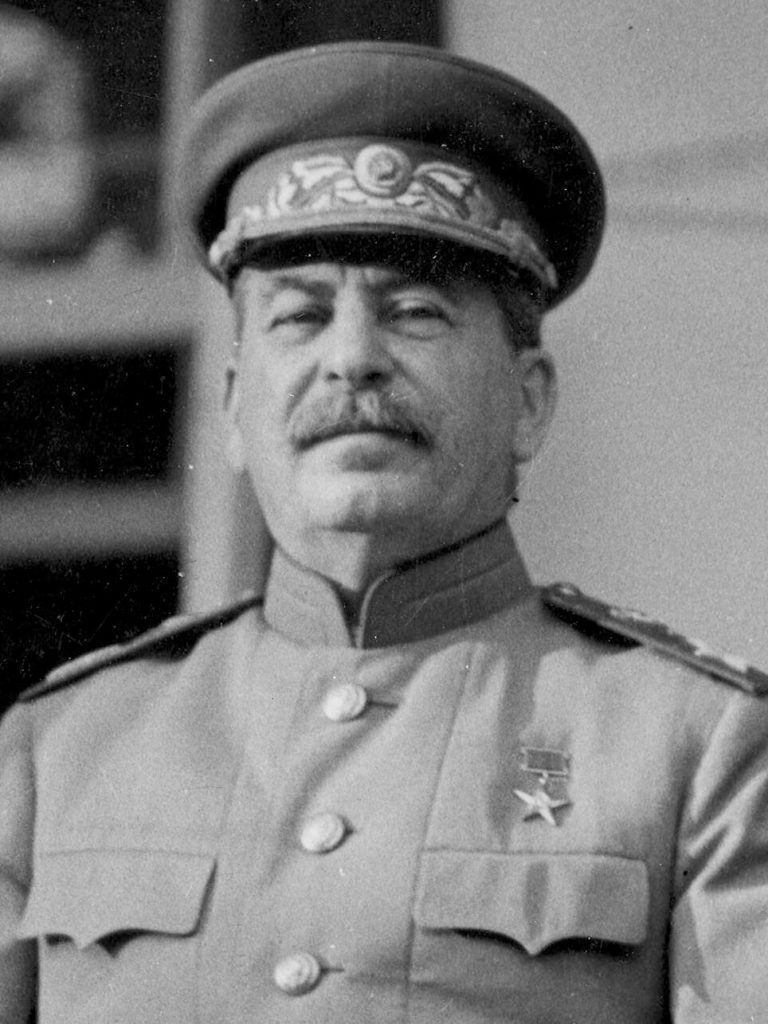
In the aftermath of World War II, the geopolitical landscape underwent significant changes, with new tensions emerging between the major Allied powers. One of the first major conflicts in this shifting environment was the Iran crisis of 1946. This crisis, also known as the Azerbaijan Crisis, highlighted the burgeoning Cold War dynamics and the critical role of U.S. diplomacy in shaping international relations. As World War II drew to a close, the Tehran Conference of 1943 had laid the groundwork for post-war cooperation among the Allies. The conference, attended by Franklin D. Roosevelt, Winston Churchill, and Joseph Stalin, had established agreements on various geopolitical issues, including the future of Iran. The leaders had pledged to respect Iran’s sovereignty and territorial integrity, promising to withdraw Allied forces from Iranian territory once the conflict with Germany ended. Despite these assurances, by early 1946, Soviet forces remained in Iran, contrary to the agreements made at Tehran. The Soviets had established pro-Soviet autonomous entities in northern Iran, namely the Azerbaijan People’s Government and the Kurdish Republic of Mahabad. These developments were met with growing concern from the Iranian government and its allies, leading to an international diplomatic standoff. The United States emerged as a key player in addressing the crisis. President Harry S. Truman’s administration, committed to containing Soviet expansionism, exerted significant pressure on the Soviet Union to adhere to the agreements made at the Tehran Conference. This pressure manifested in several ways, including diplomatic engagements and strategic ultimatums. One of the most notable aspects of U.S. involvement was the use of the United Nations as a platform for addressing the issue. In January 1946, the United Nations Security Council passed Resolution 2, which condemned the Soviet Union’s actions and called for the withdrawal of Soviet troops from Iranian territory. The resolution marked an early instance of the United Nations’ role in mediating Cold War disputes and highlighted the increasing influence of international institutions in global politics. Despite Soviet promises to withdraw, the Soviet Union’s continued military presence in Iran led to further U.S. diplomatic actions. The United States supported Iranian complaints against Soviet actions, resulting in additional resolutions by the Security Council, including Resolution 3 and Resolution 5. These resolutions reinforced the call for Soviet withdrawal and underscored the international community’s support for Iranian sovereignty. The situation reached a critical point in December 1946, when the U.S. backed the Iranian government’s efforts to reclaim territory occupied by Soviet-backed forces. This support was instrumental in the eventual Soviet withdrawal and the dissolution of the separatist republics. The diplomatic pressure, combined with the strategic use of the United Nations as a forum for international condemnation, proved effective in resolving the crisis. In addition to these diplomatic efforts, the United States played a crucial role in shaping the post-crisis political landscape. The U.S. supported Iran’s sovereignty and territorial integrity, opposing Soviet attempts to influence Iranian politics and resources. This support was evident in the broader context of the Truman Doctrine, which aimed to contain Soviet influence globally and was a cornerstone of U.S. foreign policy during the early Cold War.
The Iranian Army’s Move into Tabriz and the Situation in the City
